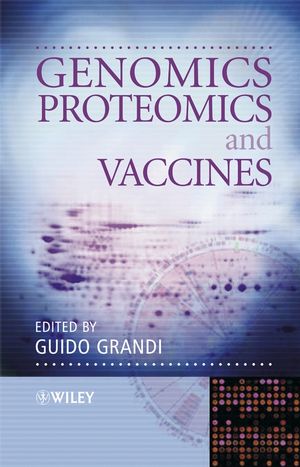Genomics, Proteomics and VaccinesISBN: 978-0-470-85616-1
Hardcover
352 pages
March 2004
 This is a Print-on-Demand title. It will be printed specifically to fill your order. Please allow an additional 15-20 days delivery time. The book is not returnable.
|
||||||
While the sequence of the human genome sequence has hit the
headlines, extensive exploitation of this for practical
applications is still to come. Genomic and post-genomic
technologies applied to viral and bacterial pathogens, which are
almost equally important from a scientific perspective, have the
potential to be translated into useful products and processes much
more rapidly.
Genomics, Proteomics and Vaccines introduces the history of vaccinology and discusses how vaccines are expected to evolve in the future. It describes the relevant technologies, including genome sequencing and analysis, DNA microarrays, 2D electrophoresis and 2D chromatography, mass spectrometry and high-throughput protein expression and purification. The book also features examples of the exploitation of genomics and post-genomics in vaccine discovery, and contains useful descriptions of the biology and pathogenesis of clinically important bacterial pathogens.
This book should be of interest to all those working in vaccine discovery and development in pharmaceutical and biotechnology companies as well as in academic institutions
Genomics, Proteomics and Vaccines introduces the history of vaccinology and discusses how vaccines are expected to evolve in the future. It describes the relevant technologies, including genome sequencing and analysis, DNA microarrays, 2D electrophoresis and 2D chromatography, mass spectrometry and high-throughput protein expression and purification. The book also features examples of the exploitation of genomics and post-genomics in vaccine discovery, and contains useful descriptions of the biology and pathogenesis of clinically important bacterial pathogens.
This book should be of interest to all those working in vaccine discovery and development in pharmaceutical and biotechnology companies as well as in academic institutions



